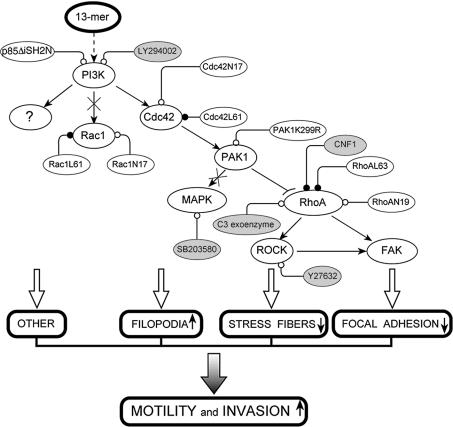Fig. 7. Model of the 13mer peptide-mediated invasion pathway. Inactivation of RhoA and activation of PAK1 and Cdc42, both upstream of RhoA, are necessary but not sufficient for invasion. We explained this through a putative pathway branching upstream of Cdc42 at PI3K (question mark). Arrows and arcs indicate activation and inactivation, respectively. Crossed arrows indicate dispensable pathways. Open or closed circles indicate, respectively, inactivation or activation by pharmacological modulators (shaded) or by dominant-negative or constitutively active constructs (unshaded). Definitions are: 13mer, 13mer β-casein-derived peptide; PI3K, phosphoinositide 3 kinase; Rac1, Ras related C3 botulinum toxin substrate 1; Cdc42, cell division cycle 42; PAK1, p21-activated kinase 1; MAPK, mitogen-activated protein kinase; RhoA, Ras homolog; ROCK, Rho-associated coil-coiled kinase; FAK, p125 focal adhesion kinase; CNF1, Escherichia coli cytotoxic necrotizing factor 1; C3 exoenzyme, Clostridium botulinum exoenzyme C3 transferase.

An official website of the United States government
Here's how you know
Official websites use .gov
A
.gov website belongs to an official
government organization in the United States.
Secure .gov websites use HTTPS
A lock (
) or https:// means you've safely
connected to the .gov website. Share sensitive
information only on official, secure websites.
